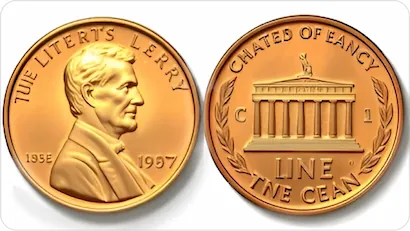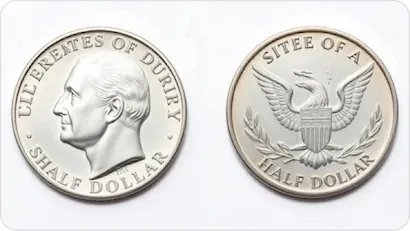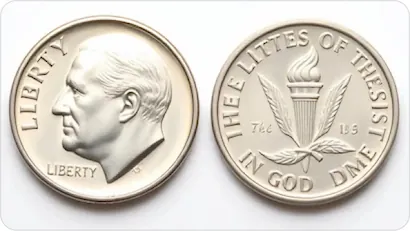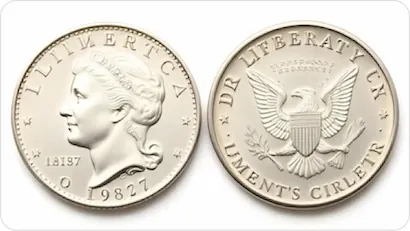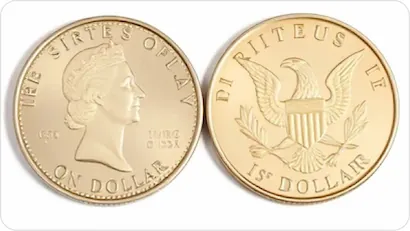Coin Grading Hub: Guides at Their Best
For numismatists, an understanding of how valuable their coins are is essential, though sometimes it might be particularly complicated to do it properly. In a large part, the worth of each instance is mainly dependent on its quality and condition, but how to assess coin types? This is where the coin rating system comes into play. Learn more about the main coin grading terms and take a look at some coin grading examples below.
Coin Grading Scales and Standards
Uniform and consistent grading standards are essential when it comes to assessing the condition and consequent worth of coins. The Sheldon Scale, created by Dr. William Sheldon in 1949, is currently the most widely used coin grading system in the world, and services dedicated to grading coins online or at special centers (e.g., PCGS and NGC as majors on the numismatic market) employ this knowledge with no limits.
Sheldon Grading Scale
As such, the Sheldon coin grading scale offers an accurate means of evaluating a coin's condition, which might range from extremely worn to pristine mint state. Along with a numerical evaluation, the Sheldon scale incorporates some descriptive terms for a more precise ranking:
| Image | Features | Description |
|---|---|---|
| 1 (Poor) | A severely worn coin that is hardly distinguishable | |
| 20 (Fine) | A coin with distinct basic features and moderate wear | |
| 50 (About Uncirculated) | A coin that shows minor wear on its highest points | |
| 70 (Perfect Mint State) | An immaculate coin with no flaws when magnified |
Note: These grades are accompanied by prefixes such as AU (About Uncirculated) or MS (Mint State) to better define the coin's condition in the end.
Grading Terms You Should Be Aware Of
- Mint State (MS): MS60 to MS70 coins that are uncirculated and left intact.
- About Uncirculated (AU): a coin that exhibits just minor wear on its highest points and retains most of its original brilliance with a rating between AU50 and AU58
- Proof Coins: Coins often denoted by "PR" with an extremely fine finish.
- Circulated Grades: Wear levels indicated by terms like Extremely Fine (EF/XF), Very Fine (VF), and Good (G).
Indeed, this type of coin grade system guarantees fair and uniform evaluation, and relying on these scales as a customer, trader, investor, or collector may secure your money, promote open transactions, and build confidence in the numismatic community.
Coin Grades Explained:
Circulated Coins
| Image | Features | Description |
|---|---|---|
| Poor (P-1) | Barely distinguishable, with nearly all the details entirely gone | |
| Fair (FR-2) | Not quite as bad as poor, and the main forms are still discernible but quite deteriorated | |
| About Good (AG-3) | Extremely worn, with almost any primary details discernible | |
| Good (G-4 to G-6) | Noticeable yet heavily worn major components | |
| Very Good (VG-8 to VG-10) | More distinct but rather worn details, particularly in the raised parts | |
| Fine (F-12 to F-15) | Lightly flattened on high points with moderate wear on distinct key elements | |
| Very Fine (VF-20 to VF-35) | Moderate wear with some texture and crisper features remaining |
Almost Uncirculated Coins
| Image | Features | Description |
|---|---|---|
| Extremely Fine (XF-40 to XF-45) | Excellent details, considerable shine, yet some wear on the highest points. | |
| About Uncirculated (AU-50 to AU-58) | Most of the shine is still present, with very little wear on the high points. |
Uncirculated Coins (Mint State)
| Image | Features | Description |
|---|---|---|
| MS-60 to MS-62 | Average uncirculated coins with obvious flaws or markings | |
| MS-63 to MS-64 | Better-looking, less-marked, above-average uncirculated | |
| MS-65 to MS-66 | Excellent uncirculated rating with a strong luster yet few flaws | |
| MS-67 to MS-69 | Excellent quality, almost perfect surfaces, and remarkable shine | |
| MS-70 | A flawless coin that appears immaculate when magnified |
Coin Grading by US Coin Type
How to Grade Coins On Your Own?
So as to grade different types of US coins, all you need to do is utilize a magnifying glass, a light source, and any grading guide. Start by looking at the coin's overall state, pay attention to any signs of wear, imperfections, or markings, examine the strike quality and luster, and finally compare your results with the typical descriptions and illustrations that appear in reliable grading manuals or references.
Do you find it flabbergasting to learn how to read coins? Then use tools like Coin ID Scanner for a speedier evaluation. An easy and convenient way to grade your coin in an instant!
